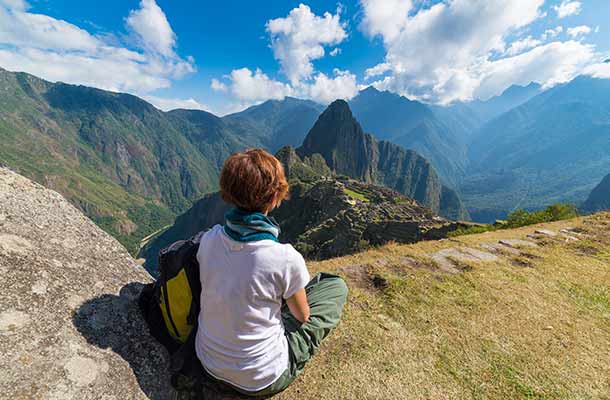A Day in the Life of a Volunteer in Peru
Globe-trotting voluntourist, Colleen Finn, tells us what it's like teaching english to a class of 5th and 6th grade students in Pumamarca, Peru.
 Photo © iStock/fbxx
Photo © iStock/fbxx
Teaching English in Peru
Another volunteer and I teach an English lesson to a combined class of 5th and 6th grade students. It could be any classroom in any part of the world—the walls are brightly painted and adorned with typical schoolroom chic: maps, pictures, numbers, and paper-plate masks with hair made of multi-colored strips of construction paper. The students are energetic and lively, with ruddy red cheeks and bright smiles. As we lead the class in a lesson on English greetings, Hernan, a quiet student, doodles idly in his notebook instead of joining in with the rest of the class. It could be any classroom in any part of the world, but this is Pumamarca.
Life in Pumamarca
Pumamarca is a rural agricultural village in the mountains near Cuzco. The village is among Peru’s poorest—there is no sewage system or running water in the homes, so the locals get their water from untreated sources, such as community faucets. Electricity is crudely bootlegged by connecting a series of wires from one source to multiple adobe homes. The families here live in poverty, working their land, subsisting from harvest to harvest, making handicrafts to sell at market, and barely scraping by. Pumamarca is a village that was all but forgotten by the Peruvian government, which withdrew financial support of the village’s only school, leaving little hope for the future of the village or the children. Thankfully, an independent charitable organization called Peru’s Challenge rehabilitated the school and turned it into the heartbeat of the community. It is a place where children go for an education and a nourishing meal; where mothers go to learn a skill, make their handicrafts, or receive advice from a social worker that the organization employs; and a place where fathers can find work or simply volunteer their skills. The entire community is involved in the Pumamarca school in some way.
Physical Education
After English class, I assist with physical education. Children of all ages play games and laugh. Girls huddle together and giggle wildly, pointing at a small group of boys who are lightly rough-housing for show. A younger boy yanks another girl’s long braid and she retaliates with a swift shove. A group of volunteers organize one of the children’s favorite games: “Gato Gato Negro,” which is their equivalent to “Duck Duck Goose.” The kids jump with joy at the opportunity to chase a volunteer around the big circle. The schoolyard is a scene of children who are happy. In this moment, they have no awareness of their poverty, their lack of clean drinking water, or the fact that they may not have a meal at home that evening. In this moment, they’re just kids.
Hygine Rituals
After physical education, the volunteers gather around an outdoor faucet where a daily hygiene ritual takes place. The children line up to wash their hands while volunteers provide them with soap and a towel dry. Sure, the kids could soap up and dry on their own, but the routine is fun and provides both volunteers and children with some coveted one-on-one time where the children can practice their English and the volunteers can bask in the warm smiles and hugs of the students. After all of the little hands are dry, we apply hand and face lotion. Although the children’s ruddy red cheeks are easily mistaken to be the picture of health, it is actually a result of sun exposure and living at high altitude. Without proper care, the skin eventually roughens and scars. It’s perceived as a mark of poverty.
After School Care
After school, the volunteers accompany the organization’s social worker on a visit to the home of a student, Hernan, my idle doodler. Their tiny adobe home houses his mother, himself, and three younger brothers and they are about to be evicted from the land. It’s shocking that anyone could be evicted from a single-room hovel with a low ceiling and dirt floors. There is no bathroom and no kitchen—cooking and cleaning activities all take place outdoors. Hernan’s mother is an alcoholic and not home that day, nor is she preparing the adobe bricks for their new home. At the conclusion of this visit, the social worker and a volunteer coordinator decide we need to intervene and help build the home before the rainy season arrives and it becomes too late. We’ll begin construction of the home the following week.
It’s a day in the life of a volunteer.
About the Author
Colleen Finn is a globe-trotting, sight-seeing, day-tripping, frequent-flying traveler with a penchant for voluntourism. When not traveling, Colleen works as a technical consultant in Portland, Oregon, and applies her love of adventure and exploration to her local surroundings by enjoying the many outdoor activities that the Pacific Northwest has to offer.
Related articles
Simple and flexible travel insurance
You can buy at home or while traveling, and claim online from anywhere in the world. With 150+ adventure activities covered and 24/7 emergency assistance.
Get a quote
No Comments